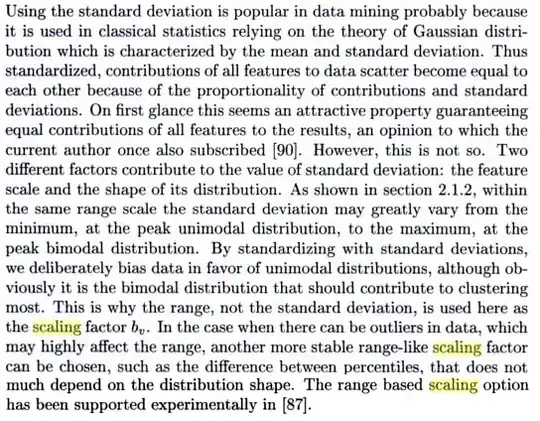I am planning to predict a binomial variable (1/0, a used point by an animal or point available to an animal in its range) using several continuous, distance-based predictor variables (distance to habitat type) and interactions (whether that habitat was available to an animal in its range). The data for each predictor variable are non-normal. I will use SAS to perform a binomial GLMM with a logit link.
Several sources (e.g., Gelman and Hill 2007) suggest that standardizing predictors by subtracting the mean and dividing by two standard deviations prior to including them in the model can help interpret parameter estimates, especially when interactions are present (but here, Variables are often adjusted (e.g. standardised) before making a model - when is this a good idea, and when is it a bad one?, @bluepole disagrees).
I read these two posts: Standardizing non-normal data for use in distance-based classifier and Standardizing data, but I didn't find a satisfactory answer to my question: Is it appropriate or acceptable to "standardize" non-normal data using the mean, when we all know that non-normal data aren't well represented by that mean? If it isn't appropriate, what are my options? Could I use the median and quantiles in a similar way? Or would I attempt to (this is getting messy) transform the data to a normal distribution and then try to standardize (yuck).
Mirkin's book (Clustering for Data Mining: A Data Recovery Approach, 2005) suggests that means and standard deviations may not be appropriate for scaling...
